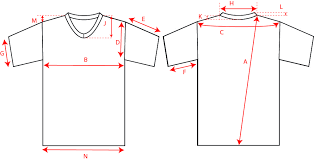NOW YOU HAVE YOUR FIRST SAMPLE. Now what?
Your factory has just sent you your first prototype. You can now review your sample and create a stunning end product. To prepare comments for your next sample, you’ll need to evaluate the following elements:
Design: Your garment/accessory’s overall creative design. The way the sample visually reflects your original design.
Fit / Function: The garment/accessory’s fit and performance as intended.
Construction: The way the construction affects the overall design and function.
These questions can be answered by following four simple steps.
You will need to review the sample:
1- Prototype sample
2- Tech Pack
3- Hard Edge Ruler
4- Tape Measure
5- Pen / Pencil
6- Highlighter
STEP 1: MEASURE THE GARMENT
You will need to measure your garment against your measurements before fitting it. Before fitting your garment, measure it first. Fabric stretching can occur when you fit your garment. It is best to inspect the garment as it was delivered by the factory.
Place your garment flat on a table. Smoothen out wrinkles. Your tape measure and hard edge ruler will help you compare your POMs with the actual measurements of your sample. These same steps can be repeated for the back.

Once you have measured the prototype, mark any specs that are outside or within tolerance. Based on your measurements outside of tolerance, make a note of any fit issues that you anticipate.
It is a good idea for the factory to check the specifications before you send the prototype. It is a good idea to request that they send you a pattern. These additional resources allow you to compare your measurements with the factory’s to see where they might be using a different method.
They can repair the garment if they measure it before you send it. To ensure that both you and your factory are using the same measurement process, both should be following it. This can be achieved by sharing a master measurement guide with your factory. The pattern will help you identify if there are any measurement or fit issues due to the construction or pattern.
STEP 2 – CHECK CONSTRUCTION
Flip to the Technical Sketch and Construction pages in your Tech Pack. Compare your Tech Pack’s construction callouts to the sample.
These are some helpful questions you can answer:
What is the Tech Pack different?
Are you happy with the way the garment was made by the factory (even if it’s not what you wanted)?
Do you have any suggestions or things you’d change?
Note any changes you would like to make to your Technical Sketches and update them accordingly. Double-check any problem areas, such as the pockets for holes or buttons and snaps, to ensure security. Also, be sure to inspect the stitching.
Read more: “How SEO Service Can Profit your Business“
STEP 3: FIT
Next, place the garment on a form close to your body. Start evaluating the fit, looking out for stress points and draglines. Before you make any fit adjustments, ensure that the garment is properly positioned on the form. You can test the movement and function of the garment by fitting it on a model that closely matches your base size.
These are some helpful questions you can answer:
What could be done to improve the fit?
Is the garment’s fit consistent with your design goals?
Once you have completed your fit evaluation, take photos and include them with any comments you send to the factory. When referring to specific problems, it can be useful to use arrows and text to illustrate the photos.
STEP 4 – WRITE COMMENTS
When writing comments, it is important to be consistent and organized. Language and cultural barriers are likely to play a role in communication. Therefore, it is important to be clear when writing comments. Refer to the numbers of your points of measure if they are numbered in the comments. Address any comments that your factory sent along with the prototype. Your factory will know where to find information if you create a consistent format for all your comments.
It is a delicate balance to be clear and kind. It can feel like you are being too direct in your comments, but too much fluff in your writing will make it confusing. Use words such as “please” or “thank you” when appropriate.
Notes you took while reviewing your sample are now part of your Tech Pack. While you may not use every section, it is important to address the three main elements that we discussed earlier: Fit/Function and Construction.
Format
This is an easy format for you to follow when you are leaving comments.
HEADER
Particularly if you have dual sourcing, the prototype #, date, style #, and factory name are important.
Ex:
“P1, 5/9/18, #OG208, Harvest”
INSTRUCTIONS
A brief explanation to help the factory understand any highlighted measures or abbreviations.
Ex:
“Measurements in Red represent measurements out of tolerance or revised measures.
The cells highlighted in blue indicate a difference of over 1/4″ between factory and [Company/Brand] measures.
BTS = “Back to Spec”
DESIGN
Comment on design changes?
Ex:
“Please add zipper garages to the top of your hand pockets. This sketch has been updated.
MEASUREMENT
Please comment on any measurements that should be changed or brought back within tolerance using the POM code.
Ex:
“#002 CB length is accepted as sampled.
#145 Back Neck Drop is unacceptable. Restore to original specifications.
CONSTRUCTION
Comment on construction such as seam changes, callouts, or stitching.
Ex:
“Please fix the bottom CF zipper that is being bartacked.
Bind the back yoke seam by cleaning it.”
PATTERN
Comment on pattern updates by clicking here. Be sure to include the tracking number if you’re sending a pattern to the manufacturer.
Ex:
“Please correct the armhole shape. See the P1 photos tab. Track #125849 has received the corrected pattern.
NEXT STEPS
End with a call-to-action statement. Are you satisfied with the prototype? Do you need another sample? Tell the factory.
Ex:
Please send 2ndProto with all the above revisions. The factory must submit a pattern with no seam allowances or ease and complete garment measurements. We are grateful.
After you have completed your comments, you can send your Tech Pack back to the factory for the next steps. Double-check that you have included photos, sketches, comments, and tracking numbers if you have sent anything to the factory. You can check review for a clothing factory as well.
Although it can seem daunting to create a consistent process for sample reviews with your factory, you will soon get comfortable with the format. Consistency is key to building a lasting, positive relationship with your factory.





















































